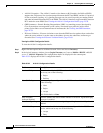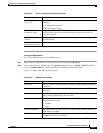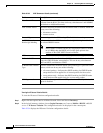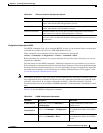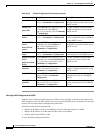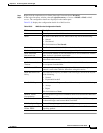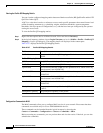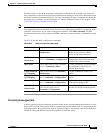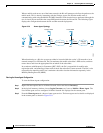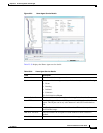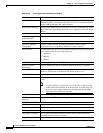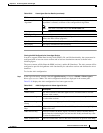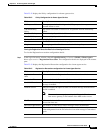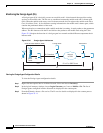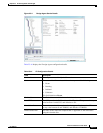
25-66
Cisco Prime Network 4.0 User Guide
OL-29343-01
Chapter 25 Monitoring Mobile Technologies
LTE Networks
When a mobile node moves out of the home network, the HA still manages to deliver the packets to the
mobile node. This is done by interacting with the Foreign Agent (FA) that the mobile node is
communicating with using the Mobile IP (MIP) Standard. Such transactions are performed through the
use of virtual private networks that create MIP tunnels between the HA and FA. The following figure
displays the configuration between the FA and HA network deployment.
Figure 25-8 Home Agent Topology
When functioning as a HA, the system can either be located within the carrier’s 3G network or in an
external enterprise or ISP network. The FA terminates the mobile subscriber’s PPP session, and then
routes data to and from the appropriate HA on behalf of the subscriber.
In accordance with Request for Comments (RFC) 2002, the FA is responsible for mobile node
registration with, and tunneling of data traffic from/to the subscriber’s home network. The HA is also
responsible for tunneling traffic, but it maintains subscriber location information separately in the
Mobility Binding Records (MBR).
Viewing the Home Agent Configuration
To view the Home Agent configuration:
Step 1 Right-click the required device in Prime Network Vision and choose Inventory.
Step 2 In the logical inventory window, choose Logical Inventory > Context > Mobile > Home Agent. The
list of home agent services configured in Prime Network are displayed in the content pane.
Step 3 From the Home Agent node, choose a home agent service. The home agent service details are displayed
in the content pane as shown in Figure 25-9.
Radio
Tower
BSC/PCFMN
320490
PDSN/FA
Foreign AAA
AAA AAA
R-P P1 P1 PDN
HA CN
Home AAA
IP Network
Internet
or PDN



